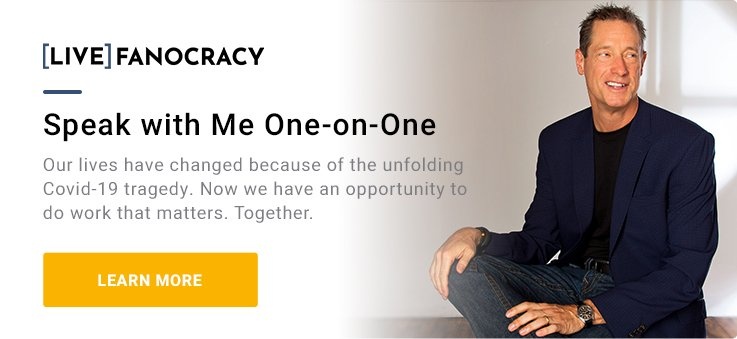Video is a fabulous way to build fans of your business. That’s especially true given the current pandemic when we can’t meet people in person. I’d like to share three video strategies that you can implement right now to reach your existing and potential customers and turn them into fans.
Last week I shared some of the background of why video is so powerful in my post The Neuroscience of Fandom, Both in Person and Online. In that post, I talked about how our unconscious brain can respond to what we see as if it is our own experience, even if it is in video through something called mirror neurons. It even explains why we feel we personally know a movie star even though intellectually we know we have never met that star.
For more on the neuroscience of fandom (including a demonstration using lemons), please check out this video which was part of a virtual session I delivered at the IMPACT Digital Sales and Marketing Day event.
Here are the three strategies you can implement right now:
Use video on your site to drive calls to action
Video can be a great way to share a small bit of information in a very personal way. In particular, video can help move people along the sales process and has potential to increase the percentage of people who want to do business with your company.
For an example of what I mean, check out the homepage of my new Project Live Fanocracy site. I wanted to have a short video that explains the project and encourages people to learn more or even sign up right away for a one-on-one strategy session with me.
I use Vidyard to host this video because I really like the way the first few seconds can be set as an animated gif.
Post video in native format on social networks
The social networks such as Facebook and LinkedIn have tended to favor video that is uploaded directly. While they can change the algorithms at any time, currently these networks seem to show a native video to more people in your network than if the same video were to be hosted on a video platform such as YouTube or Vimeo and then shared.
For example, this video that I uploaded on LinkedIn got quite a bit more engagement than one of my typical text-only posts.
As you create videos, consider uploading them directly to the social networks rather than sharing the link from a video site such as YouTube.
Create a YouTube channel
If you don’t already have a YouTube channel, now might be an ideal time to start one. While there are many nuances to creating a channel that are beyond the scope of this short post, one thing is for sure – done well, a YouTube channel grows fans of a business.
I’ve written about some people who have built large followings before. You might want to check some of these posts out.
Matt Risinger is an Austin, Texas homebuilder who used his YouTube channel to build his business from zero. What I find particularly interesting is Matt’s YouTube channel is so popular that building supply companies pay him big money for sponsorship, a side business that funds the professionals who film and edit his high quality videos.
Matt Risinger Shows How a YouTube Channel Helped Grow Business from Zero to $20 Million
Sarah Beth is the creator and star of Sarah Beth Yoga, a free weekly yoga video series on YouTube with 660,000 subscribers. Her yoga videos focus on stretching, strength, tone, and de-stressing. In addition, she offers a membership plan and app for those who want a more personal approach to their yoga practice.
Building Fandom Through Video: Lessons From Sarah Beth Yoga
Video is a way to build emotional connections even in our current Covid-19 world. When you shoot videos like Matt and Sarah Beth do, looking into the camera and being yourself, people respond as if they are in the same room through the magic of mirror neurons.
